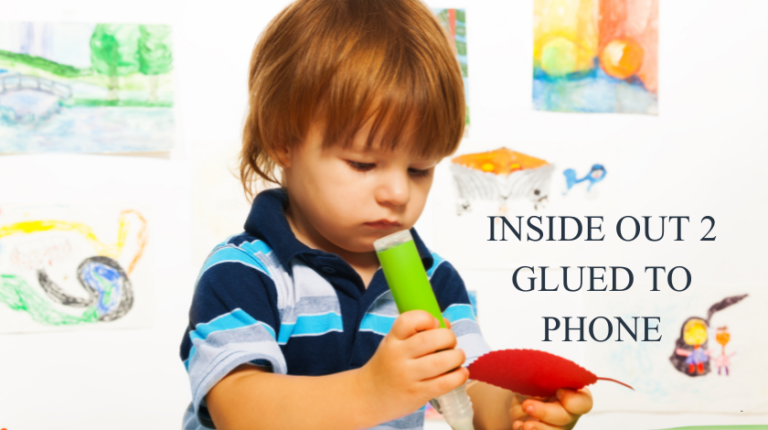
When you hear the word “schoolschoolschool,” it might sound like a quirky repetition, but it’s a playful nod to the critical role schools play in our lives. Schools are more than just buildings where kids go to learn math or history—they’re the foundation of personal growth, community building, and future success. As someone who’s been through the school system, both as a student and later as a volunteer mentor, I’ve seen firsthand how schools shape lives in ways we don’t always appreciate until years later. In this article, we’ll dive deep into why schools matter, how they impact us, and what makes them so essential in today’s world. Whether you’re a parent, student, or just curious, this guide is for you.
Let’s unpack the idea of “schoolschoolschool” by exploring its layers—education, socialization, and personal development—and why it’s such a powerful force in shaping who we are. By the end, you’ll see why schools are the heartbeat of our communities and how they set the stage for a brighter future.
What Does “SchoolSchoolSchool” Really Mean?
At its core, “schoolschoolschool” is a fun way to emphasize the central role schools play in our lives. It’s not just about one school or one experience—it’s about the collective impact of education across years, communities, and generations. Schools are where we learn to read, solve problems, make friends, and discover who we are. They’re the first place we encounter structure, diversity, and the idea that we’re part of something bigger.
When I was a kid, I didn’t always love school. Mornings were tough, and math class felt like climbing a mountain. But looking back, those moments—struggling through algebra, laughing with friends at lunch, or even getting in trouble for talking too much—taught me resilience, teamwork, and how to bounce back from mistakes. Schools are where we learn life’s big lessons, even if we don’t realize it at the time.
Why Schools Are More Than Just Classrooms
Schools aren’t just about textbooks and tests. They’re environments where kids (and even adults) grow in ways that go beyond academics. Here’s why schools are so much more than four walls and a chalkboard:
-
A Place for Learning: Schools teach us foundational skills like reading, writing, and math, but they also spark curiosity and critical thinking.
-
Social Hubs: From playground friendships to group projects, schools help us learn how to connect with others.
-
Safe Spaces: For many kids, school is a stable environment where they feel supported and cared for.
-
Future Prep: Schools equip us with the tools to chase our dreams, whether that’s college, a trade, or starting a business.
When I volunteered at a local elementary school a few years ago, I saw kids from all walks of life come together. Some were shy, others were bursting with energy, but they all learned to work as a team during group activities. That’s the magic of schools—they bring people together and help them grow.
The Role of Schools in Personal Development
One of the biggest reasons schools matter is their impact on personal growth. From the moment a child steps into kindergarten, they’re learning more than just ABCs—they’re learning how to be a person in the world. Schools teach discipline, empathy, and how to handle challenges, all while fostering individuality.
Building Confidence Through Education
When I was in middle school, I was terrified of public speaking. I’d get sweaty palms just thinking about presenting in front of the class. But my English teacher, Mrs. Carter, had us do weekly presentations on books we’d read. At first, I stumbled through them, but over time, I got better. By the end of the year, I was volunteering to go first. That experience stuck with me—school gave me a safe space to face my fears and build confidence.
Schools create opportunities for kids to try new things, whether it’s speaking in front of a group, joining a sports team, or tackling a tough science project. These moments help kids discover what they’re capable of, which is invaluable as they grow up.
Fostering Creativity and Critical Thinking
Schools also nurture creativity and problem-solving. Art classes, science fairs, and even history debates encourage kids to think outside the box. I remember working on a group project in high school where we had to design a model bridge out of popsicle sticks. Our team spent hours arguing over the design, testing ideas, and laughing when our first attempt collapsed. It wasn’t just about the bridge—it was about learning to collaborate, adapt, and think critically.
According to a 2023 study by the National Education Association, students who engage in creative projects at school are 30% more likely to pursue innovative careers later in life. Schools that prioritize creativity help students develop skills that are essential in today’s fast-changing world.
Teaching Resilience and Responsibility
Life isn’t always easy, and schools are often where we first learn to deal with setbacks. Missing a deadline, failing a test, or losing a game teaches kids how to bounce back. When I was in 10th grade, I bombed a chemistry exam because I didn’t study enough. It was a wake-up call. My teacher didn’t let me off the hook, but she helped me create a study plan for the next one. That lesson in responsibility stayed with me through college and beyond.
Schools teach kids to take ownership of their actions, whether it’s finishing homework on time or apologizing for a mistake. These lessons build resilience, which is critical for navigating adulthood.
Schools as Social Hubs
Beyond academics, schools are where we learn how to interact with others. They’re like mini-societies where kids figure out how to share, compromise, and build relationships. For many, school is the first place they meet people who are different from them—whether it’s in culture, background, or personality.
Learning to Work as a Team
Group projects might be the bane of every student’s existence, but they’re also one of the best ways to learn teamwork. I remember a history project in 8th grade where my group had to recreate a scene from the American Revolution. We all had different ideas, and it was chaos at first. But by the end, we’d figured out how to divide tasks and make it work. That experience taught me how to listen, compromise, and value other people’s perspectives.
Schools provide countless opportunities for teamwork, from sports to clubs to classroom activities. These experiences prepare kids for the real world, where collaboration is key.
Building Lifelong Friendships
Some of my closest friends today are people I met in school. There’s something special about the bonds you form during those years—maybe it’s the shared struggles of algebra or the late-night study sessions. Schools give kids a chance to connect with peers who share their interests, whether it’s through band, debate club, or just hanging out at recess.
For kids who might feel isolated at home, school can be a lifeline. I once mentored a shy student who struggled to make friends. Over the course of a year, I watched her blossom as she joined the drama club and found her people. Schools create spaces where kids can find their tribe.
Embracing Diversity
In today’s globalized world, schools are often the first place kids encounter diversity. They meet classmates from different cultures, religions, and economic backgrounds, which helps them develop empathy and open-mindedness. A 2024 report from the U.S. Department of Education found that students who attend diverse schools are 25% more likely to demonstrate cultural competence in adulthood.
When I was in high school, my best friend was from a completely different background than me. We bonded over our love of music, but we also learned so much from each other’s traditions and perspectives. Those experiences shaped how I see the world today.
The Academic Power of Schools
Of course, we can’t talk about schools without mentioning academics. Schools are where we gain the knowledge and skills we need to succeed in life, whether that’s pursuing higher education, starting a career, or just being an informed citizen.
Foundational Skills for Life
Reading, writing, and math are the building blocks of education, and schools are where most of us learn them. These skills aren’t just about passing tests—they’re about being able to navigate the world. When I was learning to write essays in school, I had no idea how much those skills would help me later in college and my career. Being able to communicate clearly and think logically is something I owe to my teachers.
Schools also introduce kids to subjects they might not encounter otherwise, like science, history, or literature. These subjects broaden their horizons and help them discover their passions.
Preparing for the Future
Whether a student dreams of becoming a doctor, an artist, or an entrepreneur, schools lay the groundwork for those goals. Advanced classes, vocational programs, and extracurriculars give students a chance to explore their interests and build skills. For example, my high school offered a coding club that introduced me to programming. I didn’t pursue it as a career, but those early lessons gave me confidence to tackle tech-related challenges later in life.
According to the Bureau of Labor Statistics, high school graduates are 50% more likely to be employed than those who don’t complete high school. Schools provide the credentials and skills needed to open doors in the job market.
Lifelong Learning Mindset
Perhaps the most valuable thing schools teach is a love of learning. A good teacher can make any subject come alive, inspiring students to stay curious long after they graduate. I had a history teacher who made the Civil War feel like a gripping novel. His passion for the subject made me want to read more, ask questions, and dig deeper. That curiosity has stayed with me, and it’s something I see in kids who are lucky enough to have great teachers.
Challenges Schools Face Today
While schools are incredible places, they’re not without challenges. As someone who’s seen the education system from multiple angles, I know it’s not perfect. Schools today face issues like funding shortages, teacher burnout, and adapting to technology. Let’s take a closer look at some of these challenges and how they impact the “schoolschoolschool” experience.
Funding and Resources
Many schools, especially in underserved areas, struggle with limited budgets. This can mean outdated textbooks, overcrowded classrooms, or a lack of extracurricular programs. When I volunteered at a local school, I noticed they didn’t have enough computers for all the students. It was frustrating to see kids eager to learn but limited by resources.
According to a 2024 report by the National Center for Education Statistics, 60% of public schools in the U.S. report being underfunded. This affects everything from teacher salaries to classroom supplies, making it harder for schools to provide the best education possible.
Teacher Burnout
Teachers are the heart of any school, but they’re often overworked and underpaid. I’ve spoken with teachers who spend their own money on classroom supplies or stay up late grading papers. It’s no wonder many feel burned out. Supporting our teachers with better pay, resources, and work-life balance is crucial for keeping schools strong.
Adapting to Technology
Technology is changing education faster than ever. From online learning to AI tools, schools are navigating a new landscape. While tech can enhance learning, it also creates challenges, like ensuring all students have access to devices and internet. During the pandemic, I saw how hard it was for some kids to keep up with virtual classes because they didn’t have reliable Wi-Fi. Schools need support to bridge this digital divide.
How Parents and Communities Can Support Schools
Schools don’t exist in a vacuum—they thrive when parents, communities, and even students work together to support them. Here are some ways we can all pitch in to make the “schoolschoolschool” experience even better:
-
Get Involved: Attend parent-teacher conferences, volunteer at school events, or join the PTA. When I started volunteering, I was amazed at how much a few hours of my time meant to the kids and teachers.
-
Advocate for Funding: Support policies that increase school funding or provide resources for underserved areas.
-
Encourage Kids: Celebrate your child’s efforts, whether they ace a test or just try their best. Positive reinforcement goes a long way.
-
Foster a Love of Learning: Read with your kids, visit museums, or explore new hobbies together. Show them that learning is fun and lifelong.
When communities rally around schools, everyone benefits. I’ve seen neighborhoods come together to fundraise for new playgrounds or donate books to school libraries. It’s a reminder that schools are a shared responsibility.
The Future of Schools: What’s Next?
As we look ahead, schools are evolving to meet the needs of a changing world. Technology, personalized learning, and a focus on mental health are shaping the future of education. Here’s what we might see in the coming years:
-
Blended Learning: Combining in-person and online education to create flexible, engaging experiences.
-
Mental Health Support: More schools are hiring counselors and teaching mindfulness to help students manage stress.
-
Career-Focused Programs: Schools are offering more vocational training and real-world skills to prepare students for diverse careers.
I’m excited about these changes, especially the focus on mental health. Growing up, I wish my school had offered more resources for dealing with stress and anxiety. These advancements show that schools are listening to what students need.
Conclusion: Why “SchoolSchoolSchool” Matters
As I reflect on my own school experiences, I realize how much they’ve shaped who I am today. Schools aren’t just places to learn facts—they’re where we grow, connect, and dream. The idea of “schoolschoolschool” captures the endless layers of impact schools have on our lives, from the skills we gain to the friendships we form.
If you’re a parent, encourage your kids to embrace every moment of their school journey, even the tough ones. If you’re a student, know that what you’re learning now—whether it’s fractions or how to work with others—will matter in ways you can’t yet imagine. And if you’re part of a community, find a way to support your local schools, whether it’s volunteering or simply showing up to cheer at a game.








